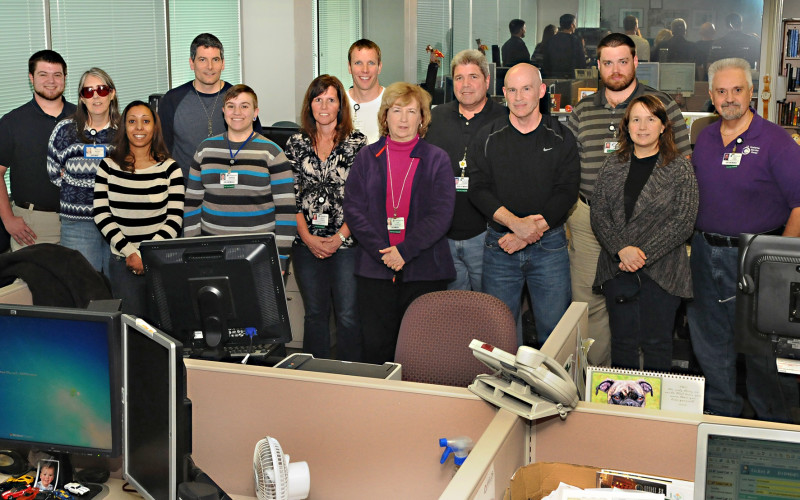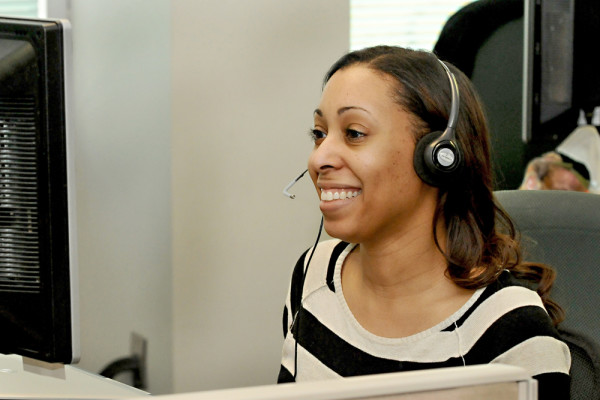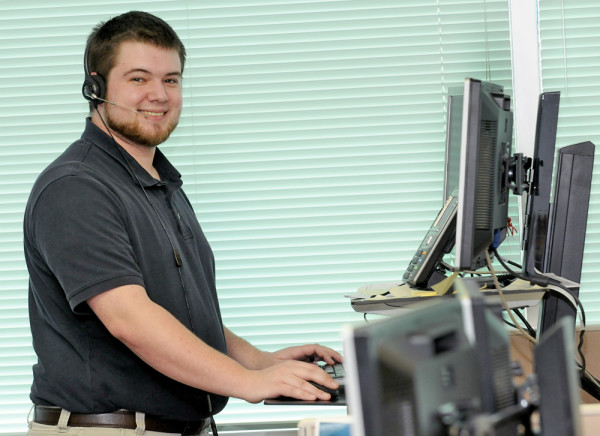IT Customer Service Center delivers expert help, fast

In today’s health care setting, technology is critical in delivering high-quality patient care. With so many medical services relying on information technology, it can be frustrating for clinicians and other staff if this technology is not performing well. Calling the IT Customer Service Center to report a problem and having to wait on hold can elevate frustration levels even more.
Since last summer, IT Customer Service Center average wait times have consistently dropped each month. In July 2014 the average wait time was seven minutes. In August it was two minutes. In March of this year, the average wait time was only 47 seconds.

“We love the challenge of being responsive to our customers and working with them until they’re satisfied that their devices are performing as they should,” said Veronica Williams, an associate customer service analyst and one of 18 members on the Customer Service Center team. The Customer Service Center is in Corporate Commons at 1 Reads Way, within a building that many know as the home of the Visiting Nurse Association. It’s here that staff handles 8,000 calls in a typical month, along with 1,300 non-urgent requests via the Christiana Care Health System intranet portal. The center is staffed 24/7, 365 days a year.
“We support thousands of devices — anything related to information technology, such as computers and laptops, telephones, TVs, smart phones, Med/PCT Carts and handheld devices that are used to assign meds through the electronic medication administration record,” said Don DiGiovanni, IT manager.
The Customer Service Center handles password issues (the password reset is the most common issue received) and any other issue or how-to question about a dizzying array of software applications — over 400 at last count.
“We support more applications than most technical call centers,” said Brenden McNeil, a customer service analyst.
The Customer Service Center supports a total of 23,000 people who use computer technology in their daily job, including employees and non-employees, such as nursing and medical students, residents and contract physicians.
Teri Foy, manager of Allied Health and Undergraduate Education, works with close to 400 students a year and says she calls customer service when students forget passwords or get locked out of computer systems.
“I use the Customer Service Center often, and they are always there when I need them,” said Foy. In survey results, customers praise analysts for their level of caring and service, regardless of how large or small the problem is.
Analysts understand that assisting providers in a clinical setting means that time is of the essence, which adds a sense of urgency to answering calls.
“Everybody appreciates that the call they are getting could be impacting the care of a patient,” said Customer Service Center team leader Jeremy Hoffman. He praises team members for their equanimity, given the volume of calls. A staff less collegial, less calm and less conscientious might be overwhelmed by the pressure, he said. In fact, Customer Service Center analysts such as Jim Boyle have a reputation for dispensing help with a dash of humor that customers appreciate.
The analysts also must find time to learn to troubleshoot new systems going live. But amid all the daily demands, they resolve 72 percent of issues during the first contact with the customer. The industry standard is 61 percent, said DiGiovanni, adding that he would put Christiana Care’s Customer Service Center up against any service center in the country.
The team has found ways to improve performance without large expenditures. For example, part of the credit for the reduction in telephone wait times goes to McNeil, who created a daily scorecard of each previous day’s performance. The scorecard shows a variety of measures where an analyst can sometimes improve.

Justin Rathmanner, an associate Customer Service Center analyst, said he studies the scorecard for metrics such as how quickly he answers calls and how efficiently he’s been able to resolve issues. Then he sees what daily adjustments he can make to improve his performance. Colleagues have reacted similarly to the scorecard. This level of commitment has brought down the average wait time by more than five minutes.
“We’re lucky because we get to solve people’s problems, and that’s rewarding,” Rathmanner said.